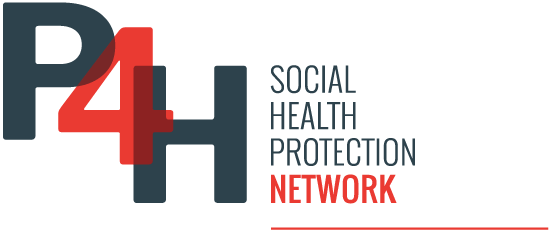The number of documents available on the P4H Network’s digital platform reflects the network’s scope of work. The majority of documents are primary source materials created by country nationals or resources produced by organizations working in social health protection (SHP) and/or health financing (HF).
Health Financing Progress Matrix – Maldives 2025
The Maldives has made major progress toward Universal Health Coverage (UHC) through expanded public health financing and the establishment of Aasandha, a national insurance program covering both public and private providers. However, the health financing system has...
Decree no. 2025 – 672 of October 29, 2025 on the implementation of compulsory health insurance in the Republic of Benin
Benin's Decree no. 2025-672 of October 29, 2025 updates the terms and conditions of compulsory health insurance, extending state coverage to children in care centers, beggars and the mentally ill, reorganizing the basic basket of care with new conditions and...
IMF Country Report No. 25/261- Guatemala Selected Issues
IMF staff prepared this background paper based on information available up to July 2025. It includes sections on Trends in Health Spending and Outcomes since 2005, Benchmarking of Health Spending, Financing and Outcomes and Health Budget Composition and PHC Spending...
Reality of Reform: Assessing El Salvador’s 2009 Health Reforms and the Future of Health Under Bukele
This 2025 publication from the Princeton University Library, explores El Salvador’s 2009 Health Reforms. The author posits that despite good intentions, results were disappointing, in part due to lack financing.
Better investments to accelerate disease elimination in the Americas
This document from the Pan American Health Organization, published at the end of 2025, brings together recommendations for cost-effective investments for 30 public health challenges in the Latin American region.Also available in English
Analysis on the individual and allocation efficiencies of health resources in China
This study analyzed trends in China’s health resource efficiency using national data and the Proportion Weight Method (PWM) to evaluate multi-input and multi-output conditions. From 2008 to 2021, the efficiency of health institutions improved from 0.77 to 0.91, while...
Public Health and its Financial Challenges: Models and Results (Ecuador)
This research by Katherine Porras Valarezo in Ecuador (2025) shows the complexity of aiming for universal health coverage. It highlights challenges in equitable access in a country with institutional fragmentation and high rates of labor informality and structural...
Rebuilding Trust: Combating Fraud, Waste, and Abuse in India’s Health Insurance Ecosystem
The report highlights the urgent need to curb Fraud, Waste, and Abuse (FWA) in India’s health insurance sector, where annual losses of ₹8,000–10,000 crore threaten financial sustainability and public trust. It proposes a three-pillar strategy—Prevention, Detection,...
At a crossroads: Prospects for government health financing amidst declining aid
The World Bank’s report delivers an assessment of how low- and lower-middle-income countries are struggling to fund universal health coverage (UHC) as economic uncertainty deepens and development assistance declines. Part of the annual Government Resources and...
Understanding the financial hardships faced by TB/HIV patients in Indonesia during the pandemic
This study examined out-of-pocket (OOP) spending and catastrophic health costs among tuberculosis (TB) and HIV patients in Bandung and Yogyakarta, Indonesia, during the COVID-19 pandemic using a mixed-methods approach. About 5.13% of households faced catastrophic...
Time to fully account for cost in monitoring financial protection and universal health coverage in low- and middle-income settings
This commentary, Time to Fully Account for Cost in Monitoring Financial Protection and Universal Health Coverage in Low- and Middle-Income Settings, published in Health Policy and Planning (18 November 2025) by Peter Binyaruka and Josephine Borghi, challenges current...
What can a ministry of finance do to improve health spending?
This ODI research report, What can a ministry of finance do to improve health spending? explores how governments—particularly in low- and lower-middle-income countries—can strengthen the efficiency and impact of health expenditure despite severe fiscal constraints....
Aligning global health initiatives with UHC: Insights from Pakistan’s evolving health aid landscape
The study examines how Global Health Initiatives (GHIs) align with Pakistan’s pursuit of Universal Health Coverage (UHC) amid reduced global aid and evolving national priorities. Using a political economy approach, it finds that expanding GHI mandates operate largely...
IBRAVS Framework: A Practical Path to Value in Healthcare and Value-Based Payment Models (Brazil)
This document (in Portuguese) published by the Brazilian Institute of Value for Health (IBRAVS) in 2023, proposes a concrete path towards the implementation of a value approach to health.
Impact of Out-of-pocket Health Payments on Poverty and Alignment of Public and External Health Financing in Guinea
This World Bank paper (2024), available in both English and French, investigates the impact of out-of-pocket payments for health services in Guinea. Among the conclusions, authors point out that public and external health financing patterns reinforce health access...
